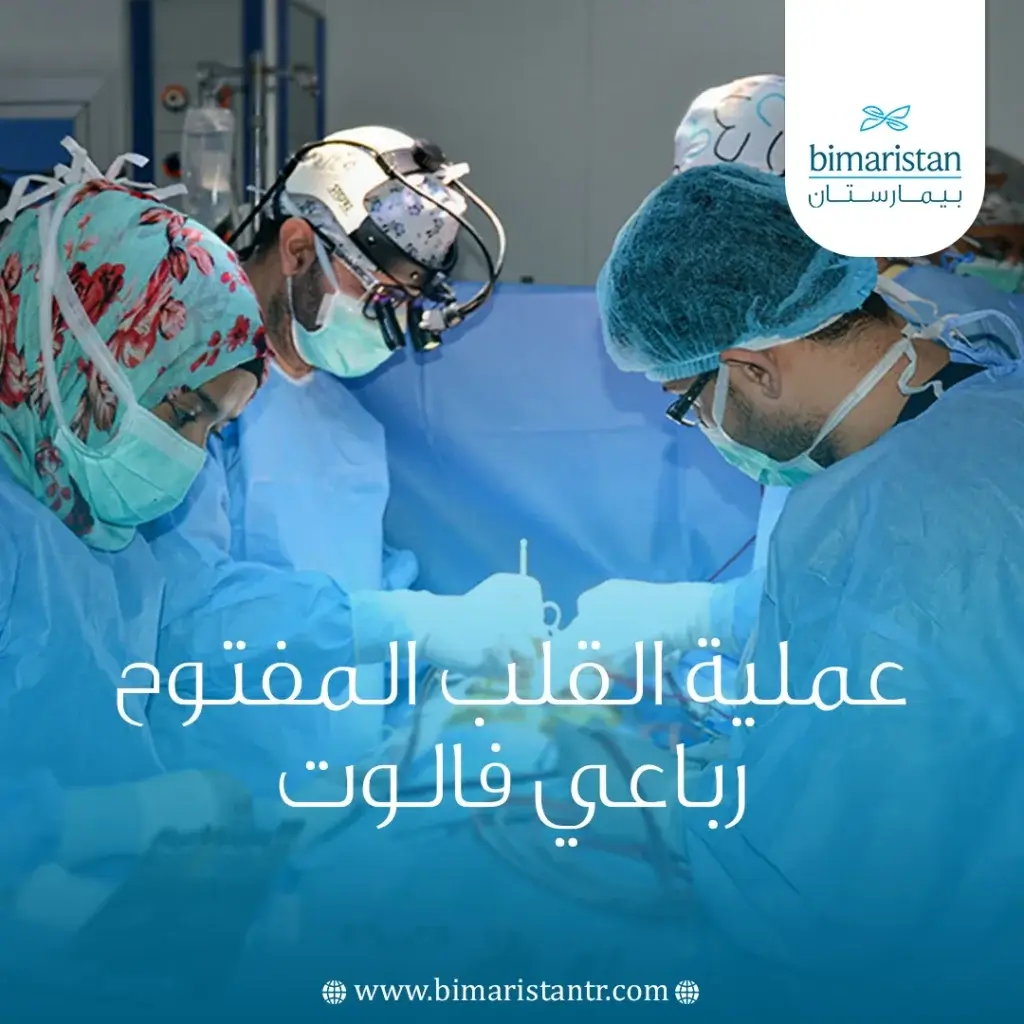عملية القلب المفتوح رباعي فالوت هي من العمليات المعقدة، حيث أن جراحة رباعي فالوت تنقذ الكثير من المرضى سنويا، لذلك اهتمت تركيا بتطوير هذه العملية على يد أمهر الأطباء وأحدث الأجهزة الطبية.
تُجرى جراحة رباعية فالوت عادةً في السنة الأولى من حياة الطفل لتصحيح العيوب الخلقية في القلب، حيث أنَّ حوالي 1600 طفل سنوياً يولدون ولديهم رباعي فالو.
ولمعرفة ما هي عملية القلب المفتوح رباعي فالوت، ولماذا سمي رباعي فالو بهذا الاسم، تابعوا معنا قراءة هذا المقال.
عملية القلب المفتوح رباعي فالوت Tetralogy of Fallot
قبل أن ندخل في عملية القلب المفتوح رباعي فالوت يجب علينا أن نفهم ما هو رباعي فالو، حيث لا يمكن فهم ماهية العملية ومخاطرها قبل أن نتعرف على الأسباب والأعراض والمضاعفات التي تنجم عن هذه العيوب القلبية الخلقية.
ما هو رباعي فالوت؟
رباعي فالوت هو عيب خلقي نادر ومعقد (يوجد منذ الولادة) بالقلب، سميت هذه الحالة على اسم الطبيب الذي وصفها لأول مرة في عام 1888.
رباعي فالو Tetralogy of Fallot هو اسم لمجموعة من أربعة عيوب في القلب وهي:
عيب الحاجز البطيني الكبير VSD
البطينان هما الحجرتان السفليتان للقلب، والحاجز البطيني هو الجدار الذي يفصل بينهما.
عيب الحاجز البطيني هو ثقب في الحاجز يسمح للدم الغني بالأكسجين بالتدفق من البطين الأيسر إلى البطين الأيمن ويختلط بالدم الوريدي الفقير بالأكسجين هناك، بدلاً من التدفق إلى الشريان الأورطي (الأبهري) في طريقه إلى باقي أجزاء الجسم.
أحياناً، يمكن أن يتدفق الدم الفقير بالأكسجين عبر الثقب (من اليمين إلى اليسار)، متجاوزاً الرئتين ويؤدي هذا إلى الزرقة وضيق التنفس لدى الطفل (انخفاض مستويات الأكسجين في الدورة الدموية).
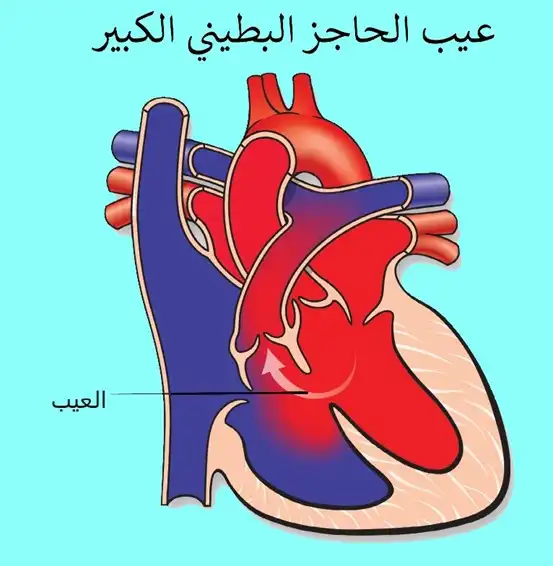
تضيق الدسام الرئوي
يتدفق الدم بشكل طبيعي من البطين الأيمن عبر صمام أو الدسام إلى الشريان الرئوي Pulmonary Arteries في الرئتين حيث يتم تحميله بالأكسجين.
التضيق الرئوي هو تضيق في الصمام بين البطين الأيمن والشريان الرئوي، أو نمو العضلات أسفل الصمام مباشرة (تضيق تحت الدسام).
في كثير من الأحيان، لا يقتصر التضيق على الصمام فحسب، بل يشمل أيضاً العضلات الموجودة أسفله مباشرةً، يؤدي هذا التضيق إلى جعل القلب يضخ بقوة أكبر لدفع الدم من خلاله ويقلل من كمية الدم المتدفقة عبر الصمام.
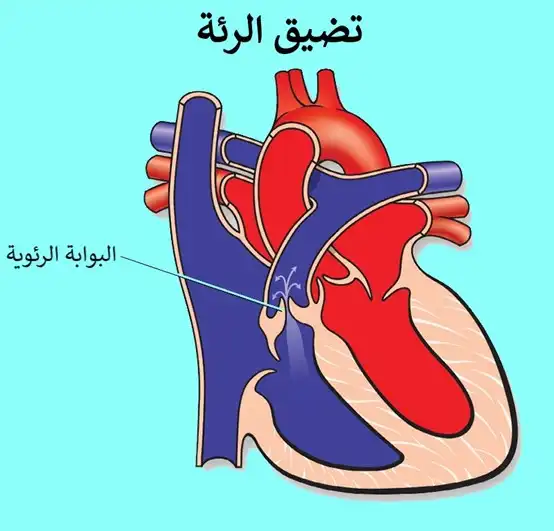
تضخم البطين الأيمن
يؤدي الضخ الإضافي الذي يتطلبه التضيق الرئوي إلى زيادة سماكة البطين الأيمن.
تراكب الشريان الأبهري
الشريان الأورطي هو الشريان الرئيسي الذي ينقل الدم الغني بالأكسجين من القلب إلى باقي الجسم. في الوضع الطبيعي يرتبط الشريان الأورطي بالبطين الأيسر ويتدفق الدم المؤكسج من البطين إلى الشريان الأورطي. في حالة رباعي فالوت tetralogy fallot يتوضع الشريان الأورطي بين البطينين الأيسر والأيمن، فوق عيب الحاجز البطيني.
يسمح هذا الموقع للشريان الأورطي بتلقي الدم من كلا جانبي القلب، بحيث يختلط الدم المفتقر للأكسجين من البطين الأيمن بالدم المؤكسج من البطين الأيسر.
ما مدى شيوع رباعي فالوت Tetralogy of Fallot وما أسباب الإصابة به؟
يعتبر رباعي ﻓﺎلو Tetralogy of Fallot عيب نادر نسبياً، حيث يبلغ عدد المصابين برباعي فالوت حوالي 5 من كل 10000 ولادة، على الرغم من أنه تم التعرف على عيب القلب هذا منذ 120 عاماً إلا أن السبب الدقيق لا يزال غير معروف.
يحدث الخلل أثناء نمو قلب الطفل قبل الولادة، يعاني حوالي 15 بالمائة من الأطفال المصابين برباعي فالوت من خلل وراثي محدد يرتبط أيضاً بعيوب خلقية أخرى مثل الحنك المشقوق.
تشخيص رباعي فالوت Tetralogy of Fallot
هذه المجموعة المعقدة من العيوب تسبب نقص لأكسجين في الدم، و السبب يعود إلى أنه لا يتدفق ما يكفي من الدم إلى الشريان الرئوي لأخذ الأكسجين من الرئة، كما أن الدم المتدفق عبر الشريان الأورطي إلى الجسم فقير بالأكسجين.
في معظم الحالات، يكون العيب شديداً عند ولادة الطفل بحيث يؤدي نقص الأكسجين إلى ظهور لون مزرق (زرقة) في جلد الطفل وشفتيه وأظافره.
عادة ما تزداد الزرقة سوءاً بشكل تدريجي خلال الأسابيع القليلة الأولى من حياة الطفل، وعادة ما يتم تشخيص رباعي فالوت Tetralogy of Fallot في وقت مبكر جداً من حياة الطفل، إلا أنه قد لا يتم تشخيصه لبضعة شهور أو حتى عدة سنوات في حال غياب الأعراض.
كيف يتم تصحيح رباعي ﻓﺎﻟﻭ؟ وما هي عملية القلب المفتوح رباعي فالوت؟
يمكن تصحيح رباعي فالوت Tetralogy of Fallot بالجراحة، يتم ذلك بشكل عام خلال السنة الأولى من ﻋﻤﺭ الطفل، على الرغم من أنه يمكن القيام به في بعض الأحيان في سن أكبر.
الهدف من هذه العمليات الجراحية هو منع تحويل الدم عبر البطينين وتخفيف ضيق الصمام الرئوي لتحسين تدفق الدم إلى الرئتين.
تتضمن الجراحة تصحيحاً كاملاً أو جزئياً لرباعي فالوت Tetralogy of Fallot حيث يتم إغلاق الفتحة بين البطينين (الثقوب) برقعة، وفتح العائق أمام تدفق الدم المتجه إلى الرئتين وتوسيع مخرج البطين الأيمن.
تعتمد الطريقة التي يتم بها فتح الانسداد على المعطيات الدقيقة لحالة كل شخص، ولكن يمكن أن تشمل إزالة بعض العضلات السميكة الموجودة أسفل الصمام الرئوي، وتوسيع الصمام نفسه -أحيانًا عن طريق وضع رقعة عبره- وإذا لزم الأمر، توسيع فروع الشرايين التي تذهب إلى كل رئة، إذا كان الصمام مسدوداً تماماً، فقد تكون هناك حاجة إلى أنبوب (أو قناة) صمامية للسماح للدم بالوصول من القلب إلى الشرايين الرئوية.
خيارات العلاج لرباعي فالوت Tetralogy of Fallot
لا يوجد علاج طبي دوائي لرباعي فالوت Tetralogy of Fallot، تتطلب التشوهات الهيكلية بالقلب تصحيحاً جراحياً، وفي معظم الحالات، يخضع الأطفال لعملية القلب المفتوح رباعي فالوت بعمر عام .
لدى بعض الأطفال، قد لا يكون الإصلاح الكامل لرباعي فالوت في وقت مبكر من الحياة (الجراحة المبكرة) هو الأمثل، قد يكون هذا هو الحال بالنسبة لطفل صغير العمر أو خديج، أو طفل مزرق بشدة وفي حالة حرجة، أو يعاني من مشاكل طبية أخرى في وقت مبكر من الحياة.
لدى هؤلاء الأطفال، يمكن إجراء عملية جراحية أولية لتزويد الرئتين بكمية أكبر من الدم والتغلب على الزرقة.
تتمثل إحدى طرق القيام بذلك في وضع أنبوب صغير جراحياً، يسمى تحويلة (عملية Shunt)، من الشريان الأبهري إلى الشريان الرئوي وذلك لتوفير المزيد من تدفق الدم إلى الرئتين.
هذا لا يصحح رباعي فالوت بالشكل اﻟﺘﺎم وستكون هناك حاجة لعملية جراحية ثانية كاملة في وقت لاحق عندما يكبر الطفل.
الخيار الآخر الذي يمكن القيام به بعد ولادة الطفل المصاب برباعي فالوت Tetralogy of Fallot بفترة وجيزة هو وضع دعامة أو أنبوب شبكي في القناة الشريانية السالكة (وهو شريان جسري طبيعي بين الشريان الأبهري والشريان الرئوي موجود لدى كل طفل عندما يكون في رحم أمه لكنه ينغلق بعد أيام قليلة من الولادة).
يتم القيام بهذا الإجراء في قسم القسطرة القلبية، ويجب إجراء إصلاح تام في وقت لاحق.
قد تكون العمليات المتكررة ضرورية لدى بعض الأشخاص المصابين برباعية فالوت، غالباً ما تؤدي جراحة توسيع الصمام الرئوي الضيق إلى قلس في الصمام.
عادةً لا يسبب قلس الصمام الرئوي إلى ظهور أعراض والجسم يتلائم مع هذا الأمر، ولكن يمكن أن يؤدي إلى ظهور أعراض أو تضخم كبير في الجانب الأيمن من القلب لدى بعض الأشخاص بمرور الوقت.
في هذه الحالات، قد تكون هناك حاجة لعملية جراحية أخرى لاستبدال الصمام الرئوي، غالباً في مرحلة المراهقة أو البلوغ، يمكنك أن تقرأ عن تبديل الصمامات بواسطة الروبوتات في تركيا.
ما الرعاية اللازمة لشخص بالغ خضع لإصلاح جراحي لرباعية فالوت؟
يوصي المتخصصون في أمراض القلب الخلقية عند البالغين بأن يخضع الشخص البالغ الذي خضع لعملية جراحية ملطفة لرباعية فالوت Tetralogy of Fallot عندما كان طفلاً لتقييم قلبي شامل بشكل دوري.
تساهم التحويلات المستخدمة في تخفيف بعض المشاكل المرتبطة برباعي فالوت مثل التضيق، وارتفاع ضغط الدم في الشريان الرئوي أو التسبب في زيادة الحِمل على الجانب الأيسر من القلب.
غالباً ما تؤدي الجراحة النهائية إلى تسريب كبير في الصمام الرئوي، كما يجب مراقبة حجم ووظيفة الجانب الأيمن من القلب عن كثب.
قد ينمو لدى بعض المرضى أيضاً أوعية جانبية كبيرة للشريان الأورطي كوسيلة لزيادة تدفق الدم إلى الرئتين، يجب إغلاق هذه قبل الإصلاح الجراحي النهائي.
إن وجود أي من هذه المشاكل أو تفاقم الأعراض، مثل الزرقة أو التعب، من الأسباب التي تجعل الشخص البالغ يخضع لعملية إصلاح جراحية كاملة.
في بعض حالات رباعي فالوت قد يصل المريض إلى مرحلة البلوغ دون الخضوع لأي إصلاح جراحي، إلا أن مثل هذه الحالات تعد نادرة، ويوصي المتخصصون بأن يفكر هؤلاء الأفراد في الخضوع لإصلاح جراحي كامل لمنع حدوث مضاعفات في المستقبل أو الموت المفاجئ.
في حال لم تفي هذه المقالة بالغرض في الإجابة عن تساؤلاتك، لا تتردد بالتواصل معنا، مركز بيمارستان عائلتك في تركيا،
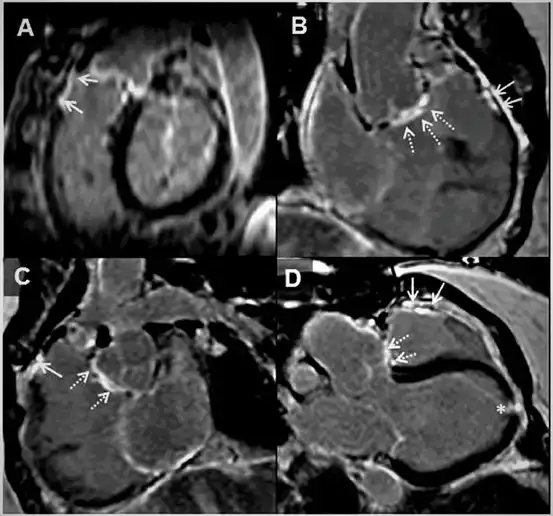
كيف يُعالج رباعي فالوت Tetralogy of Fallot جراحياً عند البالغين في تركيا؟
الإصلاح الجراحي لرباعية فالوت معقد وحساس وتقني للغاية، ويجب أن يقوم به جراح متخصص في أمراض القلب الخلقية لدى البالغين، تشمل العملية مجموعة من التقنيات لإصلاح العيوب الأربعة جميعها.
لإجراء إصلاح كامل، يغلق الجراح عيب الحاجز البطيني برقعة، يتم فتح ممر الخروج من البطين الأيمن، ويتم إصلاح الصمام الرئوي أو استبداله.
يتم توسيع الشرايين رئوية لكلا الرئتين، وفي بعض الأحيان يتم وضع أنبوب بين البطين الأيمن والشريان الرئوي لتحسين تدفق الدم.
مضاعفات عملية القلب المفتوح رباعي فالوت
على الرغم من أن العلاج الجراحي لرباعية فالوت فعال للغاية في تصليح العيوب الهيكلية وتدفق الدم عبر القلب، إلا أنه يمكن أن يسبب بعض التشوهات المستمرة في وظائف القلب، إذا ظهرت هذه المشاكل، فيمكن علاجها بجراحة إضافية.
لا يحتاج العديد من البالغين الذين خضعوا لإصلاح رباعي فالوت إلى مزيد من العلاج الجراحي، ففي دراسة نشرتها الشبكة الكندية لأمراض القلب الخلقية للبالغين، احتاج 10 إلى 15 بالمائة من الأشخاص فقط إلى إعادة الجراحة على مدى 20 عامًا.
تشمل المضاعفات المحتملة المرتبطة بالإصلاح الجراحي لرباعي فالوت Tetralogy of Fallot ما يلي:
- الاضطرابات الكهربائية: يمكن أن يؤدي وضع رقعة على عيب الحاجز البطيني إلى إعاقة قدرة الأذينين على نقل الإشارات الكهربائية إلى البطينين، يمكن تصحيح ذلك عن طريق جهاز تنظيم ضربات القلب.
- عدم انتظام ضربات القلب: يعد الرجفان الأذيني (انقباض الحجرتان العلويتان بالقلب بشكل غير منتظم وبسرعة كبيرة في كثير من الأحيان) من المضاعفات الشائعة بعد جراحة القلب، يمكن علاج ذلك بالأدوية أو بإجراء غير جراحي، أما عدم انتظام دقات القلب البطيني (نبضات سريعة جدا في الحجرات السفلية للقلب) فهو أكثر ندرة إلا أنه أكثر خطورة، و يهدد الحياة وقد سحتاج المريض إلى مزيل للرجفان أو منظم لضربات القلب.
- تسريب (قلس) الصمامات: صممت صمامات القلب للسماح بتدفق الدم في اتجاه واحد، عندما يكون هناك تسريب في الصمام، يمكن أن يعود الدم مرة أخرى إلى الحجرة التي خرج منها، يتم إصلاح الصمامات المسربة بشكل عام جراحياً، ولكن يتم حالياً استكشاف طرق جديدة لزرع الصمامات بدون جراحة (كاستبدال الصمام الأبهري بالقسطرة، أو استبدال الصمام التاجي بالقسطرة، أو بالروبوت).
- عيب الحاجز البطيني: في بعض الأحيان لا ينغلق عيب الحاجز البطيني بالكامل ويبقى هناك بعض التسريب حول الرقعة، إذا كان التسرب كبيراً أو يسبب أعراضاً كبيرة، فيمكن إصلاحه جراحياً أو حديثاً عبر القسطرة.
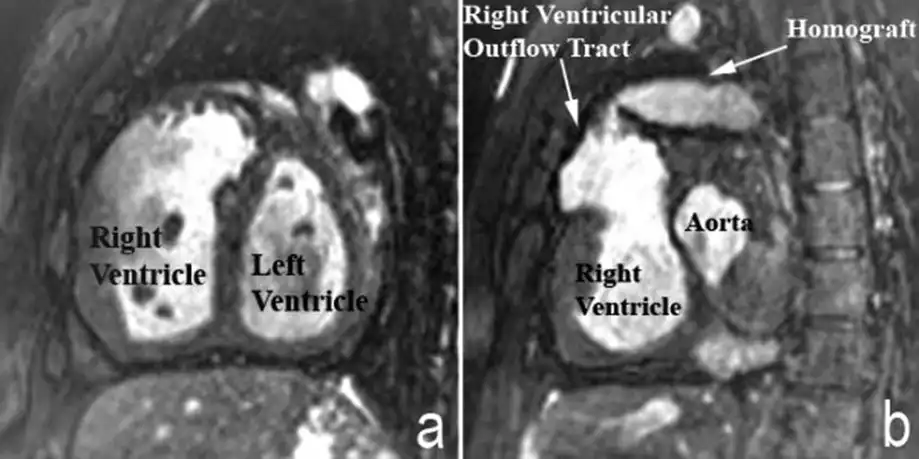
هل الحمل آمن للنساء اللواتي خضعن لإجراء جراحي لرباعي فالوت؟
يجب على النساء اللواتي خضعن لإصلاح جراحي لرباعي فالوت Tetralogy of Fallot ويفكرن في الحمل استشارة أخصائي أمراض القلب الخلقية للبالغين وطبيب التوليد المتخصص في رعاية النساء المصابات بحالات طبية خاصة.
مع الرعاية المناسبة قبل الولادة والمراقبة الدقيقة، فإن معظم النساء المصابات برباعي فالوت التي تم إصلاحها قادرات على الحمل والولادة بأمان.
ماذا بعد التصحيح الجراحي لرباعي فالوت؟
تعتبر النظرة المستقبلية طويلة المدى للأطفال والبالغين المصابين برباعي فالوت جيدة، لكنك ستحتاج إلى متابعة منتظمة مع طبيب قلب طوال حياتك لمراقبة وظائف القلب ومشاكل نظم القلب- و يجب مراجعة الطبيب وسؤاله ما إذا كانت الجراحة اللاحقة لاستبدال الصمام الرئوي، يمكن أن تستخدم اختبارات مختلفة لمساعدة دكتور القلب في مراقبتك، بما في ذلك:
- مخطط كهربية القلب (EKG)
- مخطط صدى القلب
- شاشات هولتر
- ممارسة اختبارات الإجهاد
- التصوير بالرنين المغناطيسي للقلب
سيحدد الدكتور الخاص بك ما إذا كان بإمكانك المشاركة بشكل كامل في الرياضة والتمارين الرياضية، أو إذا كان هنالك ما يجب تجنبه لدى مرضى رباعي فالوت.
يمكن لمعظم الناس المشاركة في التمارين الترفيهية على الأقل، وفي كثير من الحالات، يكون حمل النساء المصابات برباعي فالوت ناجحاً، على الرغم من أنه من المهم مناقشة المخاطر والتوصيات مع طبيب القلب الخاص بك قبل الحمل.
خلاصةً نجد أنَّ عملية القلب المفتوح رباعي فالوت هي عملية ضرورية ومنقذة للحياة، وإن العيوب الخلقية للقلب قد أصبحت قابلة للعلاج بشكل أكبر بعد التطور الطبي والعلاجي الكبير الذي شهده العالم وتركيا بشكل خاص.
المصادر:

